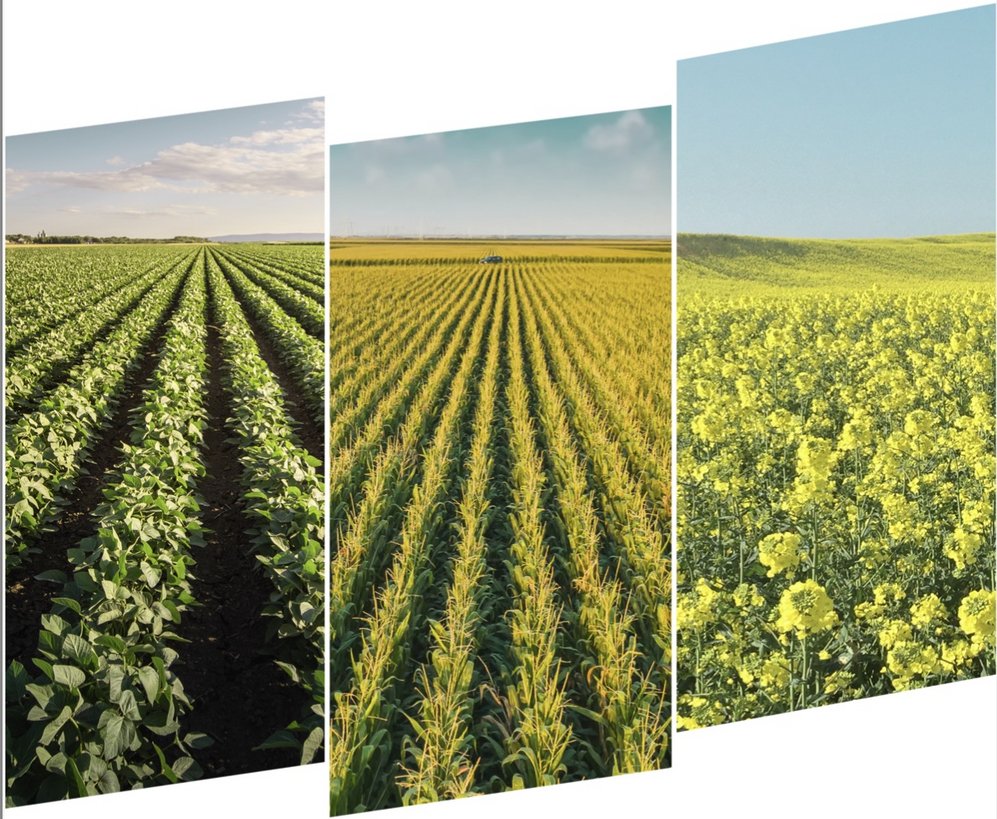The third Non-GMO market report, which is unique in its focus on Non-GMO crops for the EU market, shines a spotlight on the main trends and watchpoints in the Non-GM crop market, including the developments in supply, demand and prices for these key crops.
Non-GMO Soy: A Record Area Planted In The EU
In a record year for the crop in the EU, the Non-GM soy area is forecast to expand by 8% to a record 1.15 million ha in 2024 (Non-GM is the only type of soy cultivated in the EU). This expansion is driven mainly by favourable soy prices (and therefore favourable margins for soy producers) and high input costs for other crops, whereas soy is not as fertilizer- or energy-intensive as, for example, cereals. The knock-on impact of high yields for 2023’s harvest can also be seen with farmers choosing to plant soy again this year. And a wet autumn and winter, which delayed or prevented the sowing of winter crops, may have given soy a boost, with those fields likely to be used for sowing spring crops (such as soy).
The positive picture for the legume may also be driven by the EU’s common Agricultural Policy which gives subsidies to “nitrogen-fixing” crops, including the soybean. This is in a context of growing demand for deforestation-free and regional soy raw materials.
Brazil Soy Volume Down, But Satisfying Demand
The EU does still need to import large volumes of Non-GMO soy. Brazil, the largest soy producing country globally, is a major supplier of EU demand for Non-GMO soy. Brazilian Non-GMO soy output is estimated at 2.0 million t in 2023/24. This volume is lower than in the previous season but still enough to largely meet the European import demand.
Premiums for Non-GMO Soy Are On The Up
Non-GMO soybeans and soymeal prices have increased in recent months. Non-GM soybean was traded for 480 EUR/t in mid-May at the Bologna Exchange - 10% higher compared to early March when the recent price increase wave started. The price of Non-GM soymeal has grown at a similar pace over the last two months. In mid-May, high protein Non-GM soymeal was offered for around 620 EUR/t in Northern Germany, which is one of the biggest Non-GM feed user regions in Europe. The recent price increase on the global soy markets was mainly driven by weather events in Brazil. Non-GM soymeal premiums have returned to relatively high levels of 90-150 EUR/t in April & May as the result of a temporary low availability of Non-GM soy in early 2024.
Non-GMO Maize Supply and Harvest Forecasts Are Healthy
The EU Non-GM maize supply is likely to remain good during 2024/25 given the relatively high EU maize crop forecasts for harvest 2024 (over 99% of the EU maize cultivation is Non-GM). In 2024, the EU maize area is estimated to grow by 9.1% to 9.2 million ha. EU Non-GM maize production is estimated to grow by around 10.8% to 69.0 million t in 2024 on the back of a higher area and yield.
Non-GMO Maize – prices rising
Non-GM maize is the normal quality in the EU markets and is therefore traded with no premium (higher price) over its GM counterpart in most EU regions. In mid-May, Non-GM maize traded at around 210-220 EUR/t at Euronext Paris - roughly 20% higher compared to early March when prices hit a three-and-a-half-year low (170 EUR/t). This recent increase in EU and worldwide maize prices has been mainly driven by heavy rains as well as hot and dry weather conditions in different parts of Brazil/Argentina which are major global maize producers and exporters. As more maize is expected to be harvested in the EU in 2024 than last year, the supply of Non-GM maize is likely to remain good in the upcoming 2024/25 marketing year too. All users of Non-GM raw materials will be likely to get easy access to Non-GM maize without additional cost or effort.
Non-GMO Rape – Slightly Smaller EU Planting Area But Supply Remains Good
In the EU, only Non-GM rapeseed varieties are allowed for commercial cultivation. The EU rapeseed area for the harvest in 2024 is estimated at 6.0 million ha, -3.8% compared to the previous season but still above the 5-year average. Rape production is estimated at 19.4 million t in the EU in 2024 (a decline of 2% compared to the previous year). The smaller planting area has been driven by abundant global harvests in the previous two years which put downward pressure on rapeseed prices and so its profitability lowered. The unfavourable weather during the planting season in the autumn of 2023 hindered the plantation of some rapeseed fields in the EU.
Despite the smaller EU harvest in 2024, no supply bottlenecks are expected for Non-GM rapeseed and rapeseed meal in the EU. The EU’s Non-GM rapeseed demand is likely to be easily satisfied for all EU Non-GM users. The growing demand for GM-free feed ingredients in milk production, which is required by retail chains (and thus processors) in Germany and Austria, keeps the demand for protein-rich rapeseed meal solid.
An Upward Trend Too for Rape Prices
Non-GM rapeseed normally has no premium over GM rapeseed in the EU. As with other global grain prices, EU rapeseed prices have also been trending upwards since the end of February. Rapeseed futures rose by 16% to 480 EUR/t between early March & mid-May at Euronext. Reduced rapeseed areas and crop prospects for harvest 2024 in the EU, Canada and Ukraine also drove upward global rapeseed prices.
